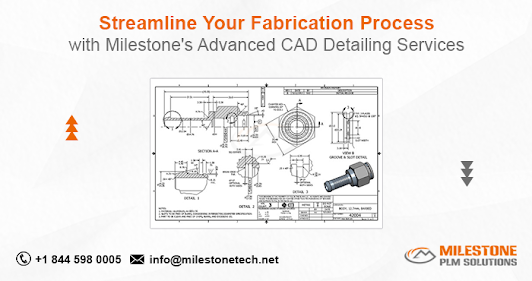Future of Sheet Metal CAD Design: Trends & Innovations
Sheet metal CAD design has undergone significant advancements over the years, transforming how engineers and manufacturers approach product development. With the continuous evolution of technology, the future of Sheet Metal CAD Design is set to become even more efficient, automated, and integrated with cutting-edge innovations. In this blog, we will explore the key trends and advancements shaping the future of sheet metal CAD design.
1. AI-Driven Automation in Sheet Metal CAD Design
Artificial Intelligence (AI) is playing a crucial role in modern Sheet Metal CAD Design. AI-powered design tools can automate repetitive tasks, optimize material usage, and suggest efficient design modifications. Machine learning algorithms are being integrated into CAD software to predict potential manufacturing challenges, thus reducing errors and minimizing waste.
Key Benefits:
Faster design iterations with AI-assisted modeling
Automated error detection and correction
Reduced material wastage and enhanced cost efficiency
2. Cloud-Based Collaboration & Remote Access
Cloud computing is revolutionizing the way teams collaborate on Sheet Metal CAD Design projects. With cloud-based CAD software, engineers can work on designs from any location, enabling real-time collaboration and seamless data sharing. This is particularly beneficial for companies with distributed teams or those involved in global manufacturing.
Key Benefits:
Enhanced collaboration with real-time file sharing
Reduced dependency on high-end hardware
Seamless version control and data security
3. Generative Design for Optimized Sheet Metal Structures
Generative design, powered by AI and computational algorithms, is gaining popularity in Sheet Metal CAD Design. This technology allows designers to input design constraints and receive multiple optimized design alternatives. By leveraging generative design, manufacturers can create lightweight yet strong sheet metal structures with minimal material consumption.
Key Benefits:
Optimized designs for better performance
Reduced material usage and production costs
Increased structural integrity of sheet metal components
4. Integration of Additive & Hybrid Manufacturing
While traditional sheet metal fabrication relies on processes like laser cutting and bending, the integration of additive manufacturing (3D printing) is opening new possibilities. Hybrid manufacturing, which combines subtractive and additive techniques, is becoming a game-changer for complex Sheet Metal CAD Design.
Key Benefits:
Ability to create intricate sheet metal geometries
Reduced lead times and prototyping costs
Enhanced design flexibility for custom parts
5. Advanced Simulation & Virtual Testing
Virtual testing and simulation tools are becoming more sophisticated, allowing engineers to test their Sheet Metal CAD Design models under real-world conditions before production. Finite Element Analysis (FEA) and Computational Fluid Dynamics (CFD) are being increasingly used to analyze stress distribution, heat dissipation, and airflow in sheet metal components.
Key Benefits:
Improved product reliability and durability
Reduced need for physical prototypes
Faster design validation and compliance with industry standards
6. Augmented Reality (AR) & Virtual Reality (VR) in Sheet Metal CAD Design
AR and VR technologies are being integrated into CAD software to enhance visualization and prototyping. Engineers can now interact with Sheet Metal CAD Design models in a 3D virtual space, making it easier to identify design flaws and improve manufacturability.
Key Benefits:
Immersive design experience for better visualization
Faster decision-making and reduced design errors
Enhanced training and collaboration for engineering teams
Conclusion
The future of Sheet Metal CAD Design is set to be more innovative, efficient, and sustainable. With advancements in AI-driven automation, cloud collaboration, generative design, hybrid manufacturing, advanced simulations, and AR/VR, sheet metal design is becoming smarter and more adaptable to industry demands. Companies that embrace these emerging trends will be at the forefront of modern manufacturing, gaining a competitive edge in the evolving landscape.
As technology continues to evolve, staying updated with the latest trends in Sheet Metal CAD Design will be essential for engineers and manufacturers to enhance productivity and innovation in their workflows.




Comments
Post a Comment